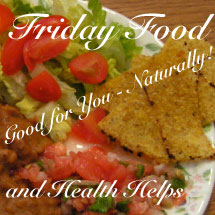I’ve had so many ideas to send on, but not enough time in the last week.
One thing the dc and I have done is some experiments with our non-milks. We conducted taste tests to decide our favorite homemade non-milk. The children enjoyed doing this (much better than if I had just made different kinds and served it to them.) This way they got to say which they didn’t like in a nice way. 🙂
[Update 2016: For an easier, quicker, super tasty and healthy homemade nut milk, click here, for Homemade Almond Milk. You may still enjoy reading below for the info.]
Soy remains low on our family’s list. Homemade soy milk is way better than store-bought, and it rated higher than others, but still is not as well liked. Barley wasn’t a winner either – very watery, even when mixed with others. But I didn’t keep trying with more barley to get a richer milk, because we didn’t care for it as much anyway.
Although rice milk is our favorite commercial milk, homemade rice milk is sticky. I figured out last year that not heating it really helped, but it was still kind of watery.
We also found that we like our nut and grain milks slightly sweeter than just straight nut or grain. The favorite sweetener is dates. Other sweeteners tend to impart their own taste, except rice syrup, which is so low on the sweetness that is takes a lot to really get things sweetened.
We tried not only straight milks, but many various combinations. We also wanted to make “raw” milk, so did not heat these at all (except the soy.)
So what’s the conclusion? Our all time favorite, winning hands down by all the children, and me too, is….
The winner is Almond Rice Milk! (with dates to sweeten it.) Almond by itself (with dates) was next. Almond milk is very rich and creamy – delicious! Adding the rice didn’t reduce this rich creaminess, but does help on the costs. So I’m glad they liked the mix better. Rice alone (with dates) and then soy (with dates) were next.
Here’s our recipe for the creamiest most wonderful not-milk. We use a SoyaJoy alternative milk maker. You can also use a blender and then strain.
1) Soak 1/2 cup raw almonds, in purified water to more than completely cover, for several hours or overnight. Drain. Add 1/2 cup raw brown rice (organic is best of course). Put these in the filter cup of the SoyaJoy, and attach to the motor head. (Just throw them in your blender if you are using that.)
2) Add purified water to the fill line in the reservoir, and put motor head on top of the water reservoir on the SoyaJoy, and plug in. (That’s about 6 cups, but you probably don’t want to put that much in your blender, if you’re using it instead. Try maybe 4 cups to blend it all up, then mix in a couple more cups when you put it in your storage container for the fridge.)
3) In the SoyaJoy you don’t want to just hit the “Start” button. Push the motor button 4 times (make sure it “beeps” each time). Then push Start. this will take it through the grind cycle only, 4 times, and not the heat cycle. You can repeat this if you want – allowing a few minutes for the motor to cool between each time – to get the most out of those almonds 🙂
4) Throw about 9-10 whole dates (without pits – organic, of course 🙂 ) into your blender with a few cups of the milk. Blend well. Let sit for about a half an hour, then give a quick whir to mix it up again. If any of the milk didn’t fit in your blender, add them together now. Yes, it does matter to let the dates sit in the milk, for the sweetness and flavor.
5) Strain, through a stainless steel fine mesh strainer, into your refrigerator container and chill. Mmm-Mmm. You can add a little pure vanilla flavor (real, not imitation) to milk that you will use for drinking or on cereals and such, but leave it plain for cooking with.
If you are using a blender to make the milk, go ahead and throw your dates in with your almonds, rice and water. Blend REALLY well. Then let sit 1/2 hour, then give a quick whir again.
You don’t have to strain this milk, but we prefer a smooth milk, so we do. Notice, it really is not any harder to do in the blender than in the SoyaJoy. So why the SoyaJoy – especially since I’m no longer using the heat feature?
- 1) I have it, and it has the nice big stainless steel water reservoir.
- 2) It does a better, faster job of grinding, automatically. I just set it and leave it. It shuts off on its own – in just a couple minutes. It goes through cycles of a few seconds blending, a few seconds resting, etc. (But it really isn’t a long chore in the blender either. This is just more convenient. But that isn’t enough to make me go out and buy a SoyaJoy.)
- 3) Most importantly, it is far easier to strain your milk when your almonds and rice “mush” are kept in the filter. From doing this in the blender, they will clog up your strainer or cheesecloth really fast, and it will be a slow, multi-try process to get it strained well. With the SoyaJoy, I am mainly straining out just a bit of fine nuts/grains that got through the filter and the chopped dates. I just dump it through into the pitcher. And I’m done!
This only takes a couple of minutes.
This is a wonderful not-milk that is cheaper, fresher and really Good for You – Naturally! compared to store-bought not-milks or milk!
We bought the SoyaJoy to help cut our costs from commercial rice milk, knowing it wouldn’t take long to pay for itself. The other reason we bought this is for the nutritional benefits of the fresh, raw not-milk. If you use not-miks or are considering eliminating milk from your diet, you might want to take a look at it. But even if you aren’t ready for that, at least give Almond Rice Milk a try in your blender.
P.S. Our new Simply Beverages Not-Cookbook, from our Good for You – Naturally! Exclusives – Freedom & Simplicity™ in the Kitchen series, is near completion! It will have more information and alternatives on Not-Milks, as well as Fresh Juices, Smoothies/Shakes, Herb Teas and Coffees, and More.







